Landscape Gardening in Coney Hall: Transforming Outdoor Spaces
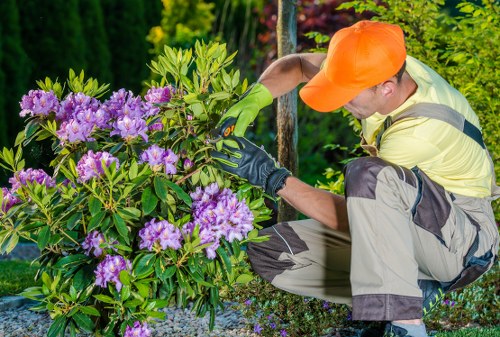
Introduction to Landscape Gardening
Landscape gardening is an art that combines creativity and practicality to design outdoor spaces that are both beautiful and functional. In Coney Hall, homeowners and property managers are increasingly recognizing the value of professional landscape gardening to enhance their premises.
With the right landscaping, a garden can become a serene retreat, a focal point for social gatherings, or a vibrant display of flora that boosts curb appeal. This article explores the various aspects of landscape gardening in Coney Hall, offering insights into design principles, plant selection, and maintenance practices that can transform any outdoor area.
Whether you're looking to revamp your existing garden or embarking on a new landscaping project, understanding the fundamentals of landscape gardening is essential for achieving the desired results.
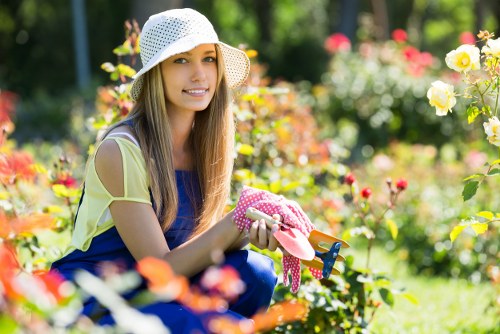
Planning Your Landscape Garden
Assessing the Space
The first step in any landscape gardening project is assessing the available space. Evaluate the size, shape, and existing features of your garden area in Coney Hall. Consider factors such as sunlight exposure, soil quality, drainage, and the local climate, which plays a significant role in plant selection.
Creating a detailed plan helps in visualizing the end result and ensures that all elements work harmoniously together. It's beneficial to sketch a layout that includes pathways, plantings, water features, and seating areas.
Additionally, taking into account the natural topography and any existing structures can help in designing a landscape that complements the environment.
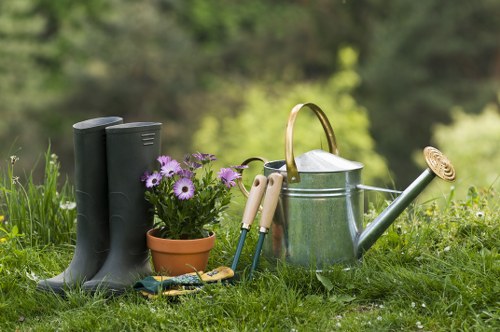
Choosing the Right Plants
Native vs. Exotic Plants
When selecting plants for your landscape garden in Coney Hall, it's important to balance native and exotic species. Native plants are adapted to the local climate and soil conditions, requiring less maintenance and water. They also support local wildlife and biodiversity.
Exotic plants, on the other hand, can add unique visual appeal and variety. However, they may require more care and may not always thrive in the local conditions. A mix of both can create a diverse and resilient garden.
Selecting Perennials and Annuals
Perennials are plants that live for more than two years, offering longevity and consistent beauty to your garden. Annuals provide vibrant colors and can be changed each season to keep the garden dynamic.
Consider incorporating a variety of perennials and annuals to ensure continuous bloom and interest throughout the year.
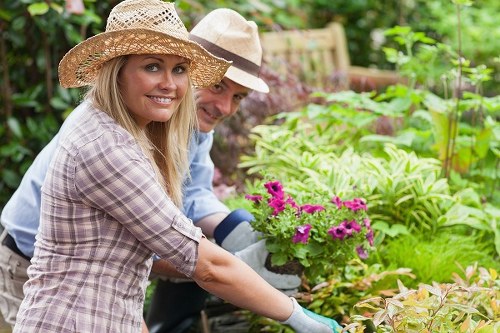
Design Principles in Landscape Gardening
Symmetry and Balance
Symmetry creates a sense of order and harmony in landscape design. Balanced elements on either side of a central axis can make the garden appear more structured and aesthetically pleasing.
Asymmetrical balance, on the other hand, offers a more natural and relaxed feel. It involves arranging elements of varying sizes and shapes to achieve equilibrium without mirroring each other perfectly.
Focal Points
Incorporating focal points such as a statue, a water feature, or a distinctive plant can draw attention and guide the eye through the garden. These features add interest and can serve as anchors for the overall design.
Color Coordination
Choosing a cohesive color palette enhances the visual appeal of your landscape garden. Harmonious color combinations can create a soothing atmosphere, while contrasting colors add drama and excitement.
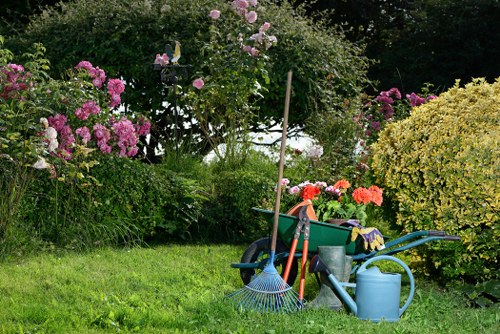
Maintenance and Sustainability
Efficient Water Management
Implementing efficient water management practices is crucial for a sustainable landscape garden in Coney Hall. Techniques such as drip irrigation, rainwater harvesting, and mulching help conserve water and reduce waste.
Choosing drought-resistant plants can also minimize the need for frequent watering, making your garden more resilient during dry periods.
Soil Health
Healthy soil is the foundation of a thriving garden. Regularly testing soil pH, adding organic matter, and practicing crop rotation can improve soil fertility and structure.
Pest Management
Adopting integrated pest management (IPM) strategies minimizes the use of chemical pesticides and promotes natural pest control methods. Encouraging beneficial insects and maintaining plant diversity can help keep pest populations in check.

Seasonal Considerations
Spring Planning
Spring is an ideal time for planting new flowers and shrubs. Preparing the soil, planting bulbs, and pruning trees and shrubs can set the stage for a vibrant garden throughout the year.
Summer Care
During the summer months, focus on watering, weeding, and protecting plants from extreme heat. Providing adequate shade and mulching can help retain soil moisture and keep plants healthy.
Autumn Preparation
Autumn is the time to clean up fallen leaves, prepare beds for winter, and plant perennials that will thrive in the colder months. It's also a good time to reflect on what worked well and plan for the next growing season.

Professional Landscape Gardening Services
Benefits of Hiring Experts
Engaging professional landscape gardeners in Coney Hall ensures that your garden is designed and maintained with expertise. Professionals bring creative ideas, technical knowledge, and efficient implementation to your landscaping projects.
Their experience helps in selecting the right plants, optimizing space, and creating a cohesive design that meets your specific needs and preferences.
Customized Solutions
Every garden is unique, and professionals can tailor their services to fit your unique space and style. Whether you desire a minimalist design, a lush floral paradise, or a functional outdoor living area, experts can bring your vision to life.
Long-term Maintenance Plans
Professional services often include long-term maintenance plans that ensure your garden remains healthy and beautiful year-round. Regular care, timely interventions, and seasonal adjustments contribute to the sustained appeal of your landscape.

Cost Considerations
Budgeting for Your Garden
Planning your landscape gardening budget is essential for managing expenses effectively. Costs can vary based on the size of the project, plant selection, materials, and professional services required.
- Initial Design and Planning
- Plant and Material Costs
- Labor and Installation
- Ongoing Maintenance
Allocating funds appropriately ensures that each aspect of the project is addressed without compromising on quality.
Cost-saving Tips
Consider sourcing local plants, using recycled materials, and implementing DIY elements to reduce costs. Additionally, phased implementations allow you to spread out expenses over time.

Enhancing Curb Appeal
Front Garden Design
Your front garden is the first impression visitors have of your property. A well-designed front landscape can significantly enhance curb appeal, making your home more inviting.
- Maintain clean and tidy flower beds
- Incorporate diverse plant heights and textures
- Use lighting to highlight key features
- Add decorative elements like pathways or benches
Thoughtful design choices can create a harmonious and welcoming entrance that stands out in Coney Hall.
Privacy Solutions
Incorporating elements like hedges, fences, or strategic plantings can provide privacy without sacrificing aesthetics. These features create secluded areas while maintaining an open feel.

Outdoor Living Spaces
Creating Functional Areas
Transforming your garden into an outdoor living space adds value and usability. Areas designated for dining, lounging, or entertaining extend the functional footprint of your home.
Incorporate comfortable seating, weather-resistant furniture, and ambient lighting to create inviting spaces that can be enjoyed throughout the day and night.
Integrating Water Features
Water features like ponds, fountains, or waterfalls add a sense of tranquility and movement to your garden. They serve as focal points and can help mask unwanted noises, creating a peaceful environment.
Fire Pits and Outdoor Kitchens
Installing fire pits or outdoor kitchens enhances the functionality of your outdoor space, making it perfect for gatherings and relaxation. These features add both practical and aesthetic value to your landscape.

Seasonal Planting Strategies
Spring Blooms
Spring is the perfect time to plant bulbs and perennials that will bloom in the coming months. Early planting ensures that your garden will have vibrant colors and lush foliage as the seasons change.
Summer Maintenance
During summer, focus on watering, weeding, and protecting plants from pests and diseases. Regular maintenance keeps your garden healthy and thriving even in the peak of summer heat.
Autumn Preparations
As autumn approaches, prepare your garden for winter by mulching, pruning, and planting species that provide winter interest. This ensures that your landscape remains attractive and resilient through the colder months.

Eco-friendly Landscaping
Sustainable Practices
Adopting eco-friendly landscaping practices contributes to environmental sustainability and reduces your garden's ecological footprint. Techniques such as composting, rainwater harvesting, and using native plants promote a healthy ecosystem.
Reducing Carbon Footprint
Minimizing the use of chemical fertilizers and pesticides, and opting for organic alternatives, can significantly reduce your garden's carbon footprint. Additionally, choosing energy-efficient lighting and materials further supports sustainability.
Wildlife-friendly Gardens
Creating habitats for local wildlife, such as birds, bees, and butterflies, enhances biodiversity and supports the natural balance of your garden. Incorporate features like birdhouses, bee-friendly plants, and water sources to attract beneficial species.

Innovative Landscaping Trends
Vertical Gardens
Vertical gardens are a modern trend that maximizes space and adds a unique aesthetic to your landscape. They are ideal for smaller gardens or areas where ground space is limited.
Smart Irrigation Systems
Integrating smart irrigation systems that automate watering schedules based on weather conditions can enhance water efficiency and reduce manual maintenance tasks.
Outdoor Lighting Innovations
Advanced outdoor lighting solutions, such as solar-powered lights and LED fixtures, not only improve the safety and usability of your garden at night but also contribute to energy conservation.

Conclusion
Landscape gardening in Coney Hall offers an exciting opportunity to transform outdoor spaces into personalized oases. By carefully planning, selecting the right plants, and incorporating sustainable practices, you can create a garden that is both beautiful and functional.
Whether you choose to undertake the project yourself or enlist professional services, the key to successful landscape gardening lies in thoughtful design and ongoing maintenance. Embrace the possibilities and watch your garden flourish throughout the seasons.
Contact us today to start your landscape gardening journey and turn your outdoor dreams into reality!